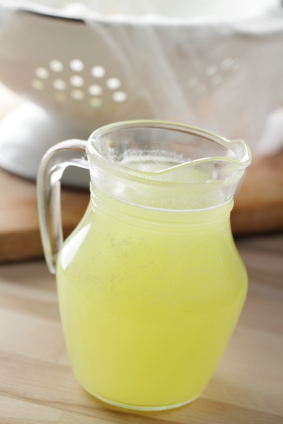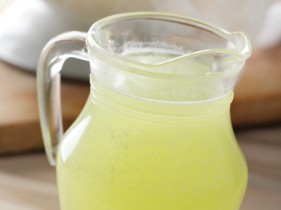 [1]Why whey is considered a waste product I will never know. We get whey from cheese making, and while many throw it out, it has more uses than you think; including dietary uses.
[1]Why whey is considered a waste product I will never know. We get whey from cheese making, and while many throw it out, it has more uses than you think; including dietary uses.
Fresh whey can last 1 week if refrigerated, but can also be frozen in ice cube trays for future use.
Benefits of Whey
1. Whey has a pleasant taste. The flavor of whey is similar to buttermilk and can be added to juice or milk to enhance the flavor if desired.
2. Whey has plenty of dietary uses. There is a reason why Little Miss Muffet ate her curds and whey. One cup of whey contains 1/6 of the potassium you need on a daily basis almost (as much as in a banana). This is another reason it functions well as a thirst quencher, particularly for athletes who have an increased need for potassium. And finally, it contains about 25% of the protein and is virtually fat-free.
3. Vegetable fermenting and whey go hand in hand. Raw whey can be used for Lacto-fermenting [2] vegetables to add more nutrition [3] to your diet. Fresh Kimchi and sauerkraut sound delicious.
4. It’s great for pets and livestock! Household pets and livestock such as cows and chickens can also benefit from the gift of whey. An added perk is that it adds extra flavor to their feed.
5. Whey is a wonderful fertilizer for the garden. According to an article at www.vicariouslyvintage.com [4], since whey is an acidic medium, it can be used as a soil conditioner. It is best used on acid-loving plants such as berry bushes and tomatoes. However, because it is acidic, ensure that you dilute the whey with water. About a cup or 2 per gallon is sufficient. Repeat every 2-3 weeks.
Depending on the types of cheese that you make, two types of whey can emerge.
Acid Whey
This comes from cheeses where the pH is down around 4.6-4.8 or in cheeses where you use lemons, vinegar, citric acid, etc., to acidify the milk.
Uses Include:
- Pour on acid-loving plants [5] or where the soil is too alkaline.
- Add seasonings and use as a marinade for meat.
- To assist in better digestion of beans and legumes, add a few tablespoons of it to the soaking water of your beans.
- Cook your grains and cereals in it such as wheat berries, oatmeal or rice.
Sweet Whey
This type of whey comes from cheeses where bacterial cultures have been used and the whey has been drained at a pH of 5.2 or above. This includes all hard cheeses (cheddar, in particular), yogurt cheese [6], and most soft cheeses. This type of whey not only has vitamins, minerals and proteins but also has beneficial bacteria (which aids digestion). It has a milder flavor than acid whey.
Sweet whey is used most for baking and can benefit your goods in two ways: it adds additional nutrition and the natural acidity makes a perfect dough conditioner. It reacts perfectly with baking soda to produce all the leavening (carbon dioxide bubbles) you need. The reaction of baking soda with whey creates baked goods that are extremely light. Many cooks simply substitute whey for whatever liquid is required in the recipe.
Uses Include:
- It may be used as a substitute for buttermilk in any recipe, especially pancakes, cornbread and scones.
- It may be used as a substitute for the liquid in any bread recipe. (Some recommend using only ½ cup at first, but most of us end up replacing all the liquid with whey.) It may cause the bread to rise a little faster than usual and brown quicker, but the taste is wonderful.
- Add to soup.
- Add to bathwater.
- Freeze it in cubes and add it to smoothies for added nutrition.
- Make ricotta cheese or farm cheese [7].
What ways have you used whey in your home or on the homestead?
